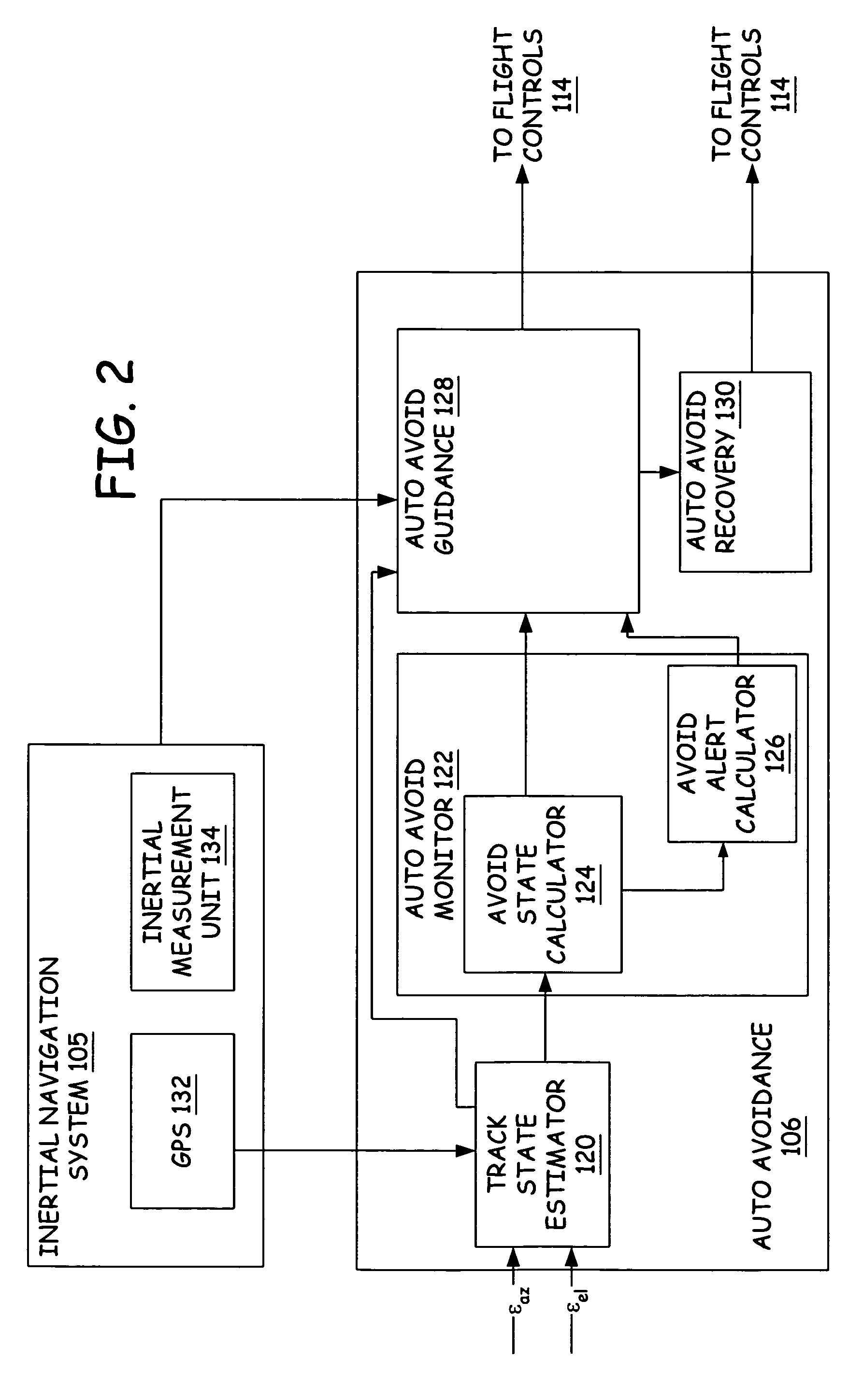Collision avoidance for vehicle control systems
a technology of vehicle control system and collision avoidance system, which is applied in the direction of anti-collision system, aircraft stabilisation, navigation instruments, etc., can solve the problems of high cost of conventional avoidance system, inability to integrate such a system on smaller vehicles, and even greater potential for collisions
- Summary
- Abstract
- Description
- Claims
- Application Information
AI Technical Summary
Benefits of technology
Problems solved by technology
Method used
Image
Examples
Embodiment Construction
[0014]Much of the description of the present invention will be devoted to describing embodiments in the context of unmanned aerial vehicles (UAV). However, it is to be understood that the embodiments of the present invention pertain to a collision avoidance system and are designed for broad application. The embodiments can be adapted by one skilled in the art to be applied in the context of any of a variety of unmanned and manned vehicles including, but not limited to, airplanes, helicopters, missiles, submarines, balloons or dirigibles, wheeled road vehicles, tracked ground vehicles (i.e., tanks), and the like.
[0015]FIG. 1 illustrates a simplified block diagram of autonomously controlled collision avoidance system 100 as implemented in a UAV 102 in accordance with an embodiment of the present invention. Collision avoidance system 100 includes a detect and track module 104 coupled to an auto avoidance module 106 which is in communication with a ground control station 108, an inertia...
PUM
 Login to View More
Login to View More Abstract
Description
Claims
Application Information
 Login to View More
Login to View More - R&D
- Intellectual Property
- Life Sciences
- Materials
- Tech Scout
- Unparalleled Data Quality
- Higher Quality Content
- 60% Fewer Hallucinations
Browse by: Latest US Patents, China's latest patents, Technical Efficacy Thesaurus, Application Domain, Technology Topic, Popular Technical Reports.
© 2025 PatSnap. All rights reserved.Legal|Privacy policy|Modern Slavery Act Transparency Statement|Sitemap|About US| Contact US: help@patsnap.com



